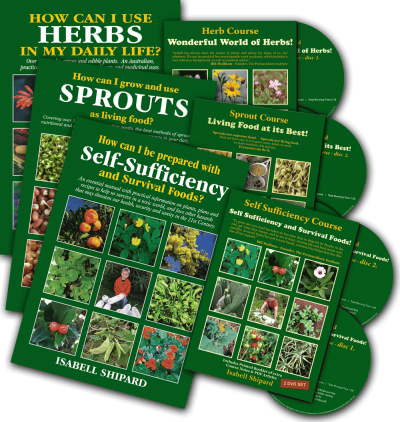Alehoof
Ground Ivy, Coin Grass, Creeping Jenny, Creeping Charlie, Run-away-robin, Cat’s Foot Glechoma hederacea syn. Nepeta glechoma F. Apiaceae
Description
A native of Europe and North Asia, this tough, perennial ground cover has prostrate, trailing stems that send roots into the soil as it runs along the ground, making a dense mat with very attractive scalloped, kidney-shaped leaves to 4-5cm diameter. The common name, cat’s foot, relates to the soft scalloped leaves that resemble the padded paws of a cat. The plant grows 15cm tall, with the petiole joining the leaf to the trailing stem, giving the plant its height. Leaves form in pairs along the square stem and look like a string of coins, and for this reason, the plant was sometimes called coin grass. Leaves are covered with fine hairs and release a slightly balsamic aroma, when crushed. The flavour is very mildly bitter, but not unpleasant to eat. Dainty, two-lipped flowers are brightblue to violet.
… … omitted text, please see How can I use HERBS in my daily life? for full text.

A revered herb from early AD with many medicinal uses as well as flavouring beer, as is evident by its common name, ale-hoof. The plant was used to flavour, clarify and preserve the brew, until it was superceded by hops. Alehoof made as a tea, called gill tea, was an all-purpose drink, cooling, stimulating, and held in high esteem as a wash for treating the eyes, whether it was for black eyes, soreness, watery eyes, inflammation, itch, smarting, spots or failing eye sight. The herb tea was prescribed for: indigestion, fevers, headaches, griping pain, gout, sciatica, vertigo, weak backs, nervous disorders and depression; jaundice, arthritis, persistent coughs and respiratory ailments; normalising heart beat; stones in the urinary tract; stimulating circulation; detoxifying the body and strengthening the stomach, spleen, gall, glands, kidneys, liver (as a gentle stimulating tonic) and to prevent premature ageing.
… … omitted text, please see How can I use HERBS in my daily life? for full text.
Maurice Messegue, in ‘Of Men and Plants’, tells of his experiences, with herbs for helping women have victory over cellulite. He believed that cellulite was the result of toxicity of the body, the effect of a functional deficiency of the kidneys, liver and the bowels. He used diuretic footbaths made with alehoof, greater celendine, couch grass, horsetail and broom, together with a herbal massage cream and a balanced, monitored diet.
… … omitted text, please see How can I use HERBS in my daily life? for full text.


